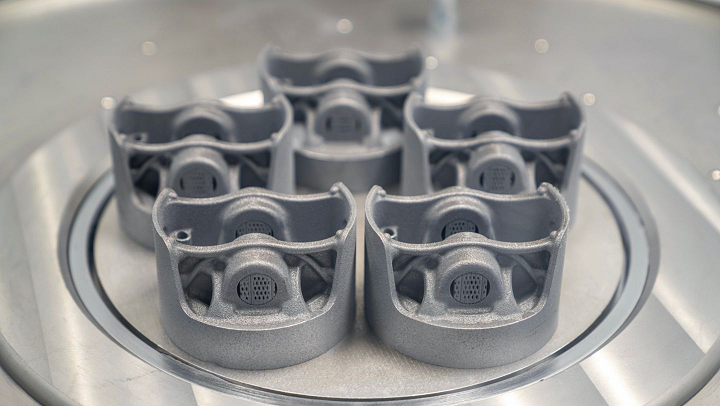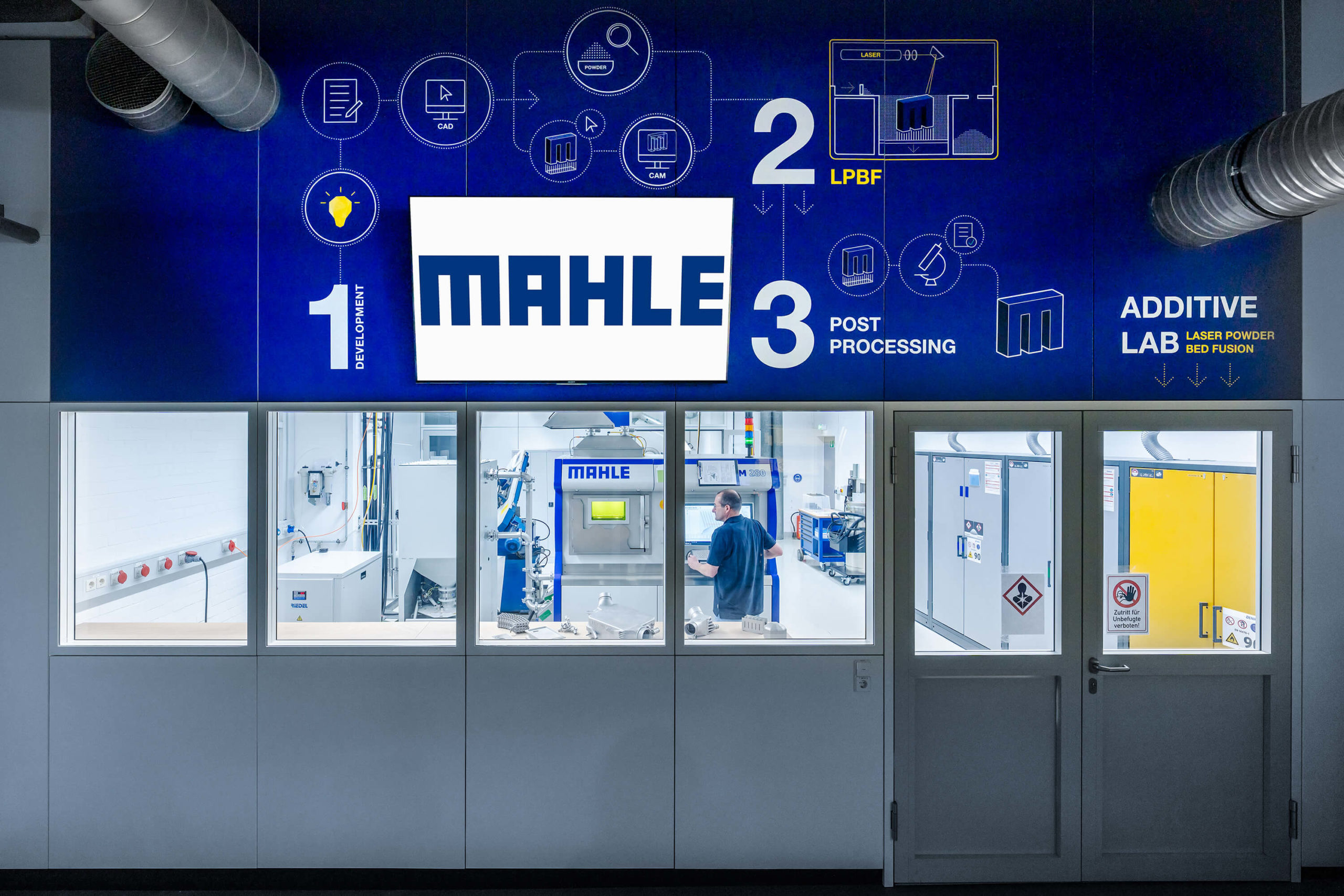With some $16B in revenue and 80,000 employees, MAHLE (LEVE3.BVMF) is not just one of the world’s largest automotive suppliers but also an increasingly significant player in the 3D printing industry. When a company of that importance throws its weight behind a technology it has significance for not just additive manufacturing (AM), but global production. For that reason, the announcement that the German group is continuing a partnership with metal 3D printer manufacturer SLM Solutions (AM3D.DE) bodes well for the widespread adoption of AM.
The two firms told the public that MAHLE would be using SLM’s equipment to assist OEMs and Tier 1 suppliers to perform serial production of metal 3D printed parts. Specifically, MAHLE will focus on aluminum and stainless-steel alloys, 3D printing topology optimized components impossible with conventional processes to reduce overall weight. In their announcement, the partners suggested that this would be necessary as automotive manufacturers attempt to achieve climate change-related goals.
“3D printing for mobility just makes sense,” comments Sam O’Leary, CEO of SLM Solutions. “Our cooperation with MAHLE revolutionizes the production of automotive components by making them better, stronger, and lighter, not to mention more climate-neutral.”
“The development of new systems and components has to be much faster today than it was a few years ago, especially when it comes to solutions for sustainable CO2-neutral drive systems,” says Michael Frick, Chairman of the MAHLE Management Board (ad interim) and CFO. “With our new 3D printing center and SLM Solutions as a technology partner, MAHLE is once again stepping up the pace in its strategic fields, for example, E-mobility.”
Interestingly, one of the 3D printing applications for which MAHLE is most well-known doesn’t appear to be the most eco-friendly. In 2020, the company worked with metal 3D printer manufacturer TRUMPF to 3D print lightweight, rigid pistons for Porsche using laser powder bed fusion (LPBF) technology. While the components, along with a 3D printed charge air cooler, likely contributed to greater energy efficiency for the Porsche 911 GT2 RS, a feature that will be necessary for the shift to electronic vehicles, it’s hard to imagine a world in which more efficient sports cars will contribute to mitigating global warming.

3D printed pistons for the Porsche 911 GT2 RS, made by MAHLE with TRUMPF technology. Image courtesy of Porsche.
Perhaps more closely aligned with climate goals, MAHLE’s parts were also used in the production of Urwahn’s e-bikes, which feature 3D printed metal frames and run on MAHLE electric motors. However, here again we note that the price of these vehicles begins at $5,000, limiting ostensibly eco-friendly mobility to the upper-middle class.
While AM, in this case, may or may not contribute to overall carbon emissions, it will impact the world of automotive manufacturing. SLM Solutions suggests that about 120 of its metal 3D printers already operate in the automotive sector. MAHLE’s 3D printing center in Stuttgart will serve to speed up prototype production for its OEM clients, cutting manufacturing time from months to days. MAHLE will direct its energy toward thermal management, mechatronics, and electronics, with an SLM Solutions application engineer supporting the company along the way.

MAHLE’s 3D printing facility in Stuttgart, Germany. Image courtesy of SLM Solutions.
The 500-square-meter Stuttgart facility already hosts an SLM 280 machine and five employees. This new deal suggests that they may have to expand. With the companies implying that the goal is to help drive series production for automotive OEMs, does that mean that MAHLE will take on the company’s 12-laser NXG XII 600 machine one day? It wouldn’t be surprising, given the fact that Porsche has already used the system to 3D print a proof-of-concept e-drive housing or that hypercar maker Divergent is an NXG XII customer.

3D printed e-drive housing made for Porsche with SLM Solutions technology. Image courtesy of Porsche.
If MAHLE does end up purchasing one of these machines, it would be a significant achievement for SLM, as half of the vehicles in the world contain MAHLE parts, according to the conglomerate. According to the “Additive Manufacturing for Automotive Part Production – 2019 – 2029” report from SmarTech Analysis, automotive 3D printing represents a $9 billion revenue opportunity. With companies like MAHLE adopting the technology, it would be surprising if SmarTech’s projections were right on the money.
Subscribe to Our Email Newsletter
Stay up-to-date on all the latest news from the 3D printing industry and receive information and offers from third party vendors.
You May Also Like
3D Printing Financials: Fathom Struggles in Financial Quicksand During Critical Transition
Facing a year of key transitions and financial pressures, Fathom (Nasdaq: FTHM) has filed its annual report for 2023 with the U.S. Securities and Exchange Commission (SEC). The document outlines...
Latest Earnings Overview for Australian 3D Printing Firms Titomic and AML3D
Australian 3D printing manufacturing firms Titomic (ASX: TTT) and AML3D (ASX: AL3) reported their financial results for the period from July to December 2023, marking the first half of their...
3D Printing Webinar and Event Roundup: April 7, 2024
Webinars and events in the 3D printing industry are picking back up this week! Sea-Air-Space is coming to Maryland, and SAE International is sponsoring a 3D Systems webinar about 3D...
3D Printing Financials: Unpacking Farsoon and BLT’s 2023 Performance
In the Chinese 3D printing industry, two companies, Farsoon (SHA: 688433) and Bright Laser Technologies, or BLT (SHA: 688333), have recently unveiled their full-year earnings for 2023. Farsoon reported increases...































